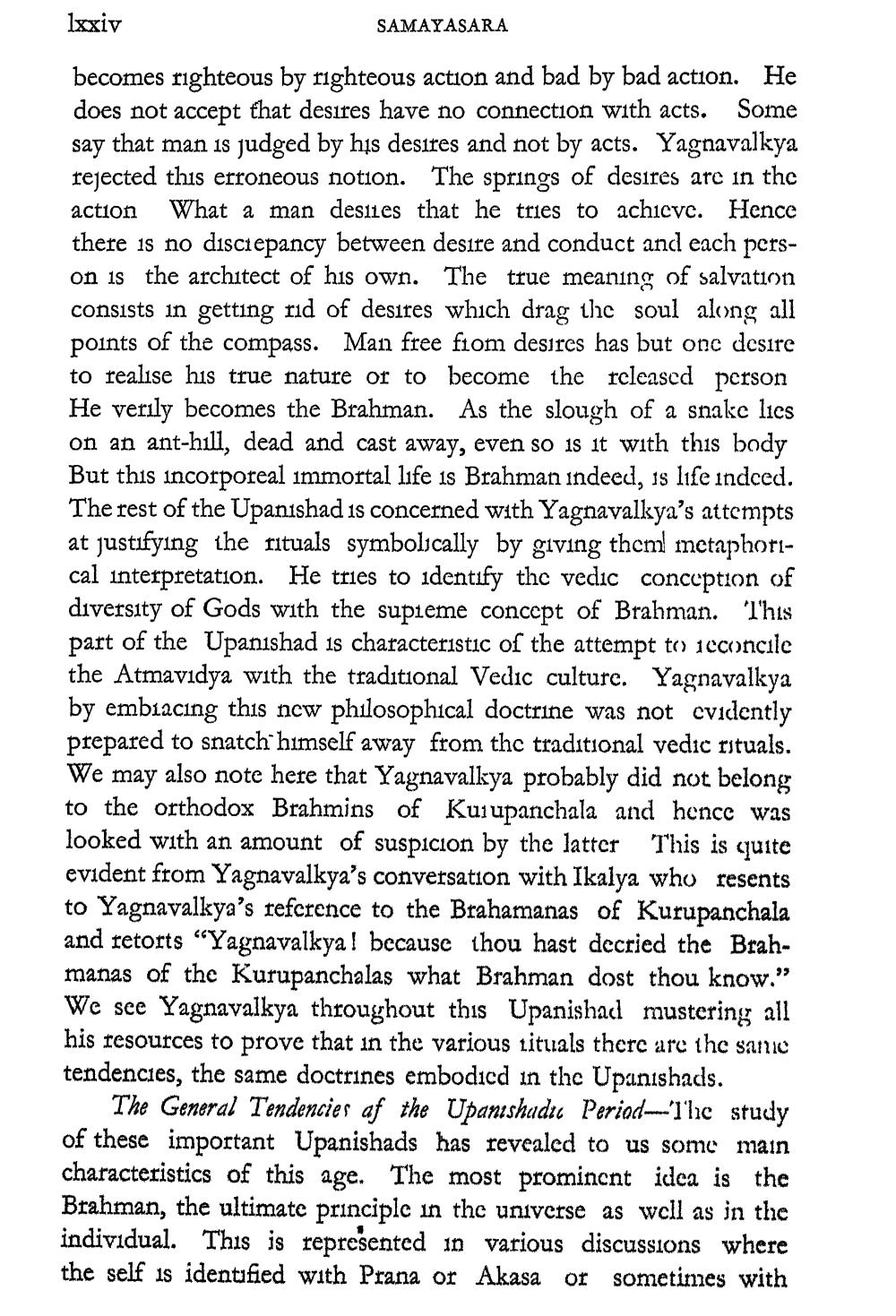________________
lxxiv
becomes righteous by righteous action and bad by bad action. He does not accept that desires have no connection with acts. Some say that man is judged by his desires and not by acts. Yagnavalkya rejected this erroneous notion. The springs of desires are in the action What a man desires that he tries to achieve. Hence there is no discrepancy between desire and conduct and each person is the architect of his own. The true meaning of salvation consists in getting rid of desires which drag the soul along all points of the compass. Man free from desires has but one desire to realise his true nature or to become the released person He verily becomes the Brahman. As the slough of a snake lies on an ant-hill, dead and cast away, even so is it with this body But this incorporeal immortal life is Brahman indeed, is life indeed. The rest of the Upanishad is concerned with Yagnavalkya's attempts at justifying the rituals symbolically by giving them metaphorical interpretation. He tries to identify the vedic conception of diversity of Gods with the supreme concept of Brahman. This part of the Upanishad is characteristic of the attempt to reconcile the Atmavidya with the traditional Vedic culture. Yagnavalkya by embracing this new philosophical doctrine was not evidently prepared to snatch himself away from the traditional vedic rituals. We may also note here that Yagnavalkya probably did not belong to the orthodox Brahmins of Kurupanchala and hence was looked with an amount of suspicion by the latter This is quite evident from Yagnavalkya's conversation with Ikalya who resents to Yagnavalkya's reference to the Brahamanas of Kurupanchala and retorts "Yagnavalkya! because thou hast decried the Brahmanas of the Kurupanchalas what Brahman dost thou know." We see Yagnavalkya throughout this Upanishad mustering all his resources to prove that in the various tituals there are the same tendencies, the same doctrines embodied in the Upanishads.
The General Tendencies af the Upanishadi Period-The study of these important Upanishads has revealed to us some main characteristics of this age. The most prominent idea is the Brahman, the ultimate principle in the universe as well as in the individual. This is represented in various discussions where the self is identified with Prana or Akasa or sometimes with
SAMAYASARA




